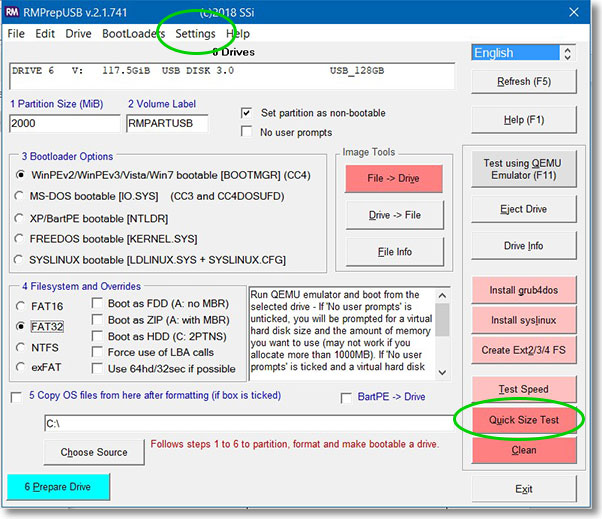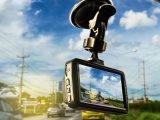
Tesla Dashcam exFAT
September 3, 2019Disclosure: This is a professional review blog. Bear in mind that some of the links in this post are affiliate links and if you go through them to make a purchase I will earn a commission. Keep in mind that I link these companies and their products because of their quality and not because of the commission I receive from your purchases. All of the products are tested thoroughly and high grades are received only by the best ones. I am an independent blogger and the reviews are done based on my own opinions.
The Tesla Model S and X cars have this neat feature that’s a byproduct of their autopilot.
Due to the fact that these cars have integrated cameras for use by the autopilot’s AI, it means that it has a built-in dashcam. All you need is an empty USB flash drive with a folder with the exact name “TeslaCam”. You can plug that into the USB ports under the dashboard touchscreen, which will show a prompt on the dashboard screen and begin the process of transferring the dashcam files onto your USB flash drive.

The onboard CPU will encode the stored video onto the USB flash drive as 720p video files, though the resolution will be slightly different. While they’re basically 720p videos, the actual resolution is 1280 x 960, the default resolution of the front-facing camera. While technically the same width as 720p, the aspect ratio is 16:12, higher than typical 720p which is 16:9. This is largely beneficial, though, since that means the onboard dashcam can store up to 60 minutes of video from all three cameras (one front, two side facing) with a fairly wide field of view. It also doesn’t record audio and mutes the colors to further save on space, since that’s not essential to the function of the autopilot.
The software is designed to overwrite the old recording in the storage starting with the oldest minute. This means that if you need to pull something off of the dashcam, make sure to do it right after it happens. All you have to do is plug in a flash drive and run through the prompts to transfer the files to your flash drive and you’re set. It’s most often recommended that you have a drive of at least 32 GB, since these are still HD files and fairly large, but since you can easily find drives with 128, 256 and even 1024 GB, you could store hundreds of hours of video on a single drive. You can just plug it in, set it up and leave it. It’ll even automatically record Sentry Mode video in up to 10-minute clips. Just be sure to back it up and remove unwanted files every once in a while.
While there are indubitably better dash cams with higher resolution, audio and more common resolutions, the cameras are ideally located, have a wider vertical field of view, and you can even pull video from the side-view cameras, and so long as it’s formatted properly you can put any USB drive you want. Add to that the fact that it’s already integrated into the car at the ideal viewing locations to allow the autopilot to clearly view as much of its surroundings as possible, and it’s more than enough for most users.
Here’s the one rub. Back in 2006, Microsoft created a special formatting for USB flash drives and SD cards called exFAT, or extended File Allocation Table. It was made to replace the less efficient FAT32 formatting of flash-based storage devices to allow it to store individual files larger than 4 GB, which is the natural limit of the FAT32 system. As a result, many USB flash drives and SD cards don’t actually support FAT32. This is an issue because the Tesla Dashcam needs flash drives to be formatted to FAT32, and the native Windows drive formatting tool won’t format flash drives and SD cards to FAT32, but exFAT.
If you’re using a USB flash drive or an SD card adaptor with SD cards and have the wrong file formatting, it can cause issues with how the data gets encoded onto the USB drive, since the way the bits and bytes are actually written onto and arranged on the drive are slightly different. As a result, the onboard computer will expect the drive to be formatted in a specific way and is designed to encode the video files in a very specific way. As a result, if the drive isn’t formatted to FAT32, then the onboard computer system won’t recognize it as a valid destination for your dashcam files.
The main reason Tesla uses the FAT32 system is that they don’t really need files to exceed that 4 GB limit, given that the internal limit for videos is only 3 GB. Add to that the act that the FAT32 system is compatible with a wide range of operating systems, not just for computers, but even mobile devices, and it’s the ideal formatting system.
Fortunately, in the wide world of the internet, there’s plenty of free and proprietary 3rd party tools you can download to format your USB flash drive or SD card to FAT32. Given that the FAT32 system has a theoretical limit of 16 Terabytes (aka ~16,000 GB), it’s compatible with just about any kind of drive, not just flash-based drives.
There’s quite a few free, open-source utilities that will allow you to format your storage device to FAT32, even if it’s well over 32 GB. One example are rufus by Peter Batard, which can be found on github by googling “pbatard rufus releases”, or you can just click here, and get the latest completed version, which is 3.6 as I write this. Alternatively, just google “open source FAT32 formatting utility” and pick whichever one you want. Picking up an open source version is more likely to be safer and definitely going to be free, since the open-source community is more interested in tinkering and successfully solving problems than making money.
If you think that’s just too much work or aren’t comfortable working with free software, feel free to just get a regular portable hard drive, which can easily be formatted to FAT32 with the file formatting utility built into Windows XP, Vista, 7, 8 and 10. They also commonly come with capacities ranging from 500 GB to 2 TB, and are often a little cheaper since they use the old fashioned platter drives or regular SSD drives. Here are a few suggestions. Just click on the image below and you’ll be redirected to Amazon through our affiliate link, (notice these aren’t just regular flash drives, these are the best ones for tesla dashcam) or click here if you’re using an adblocker (as you should).
UPDATE: There seems to be a new player in the game. Their name is Pure Tesla, they are slightly cheaper than their competitors and they sell pre-formatted Tesla USB drives. Click here to check check them out.





